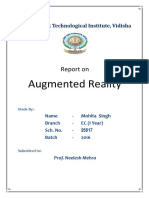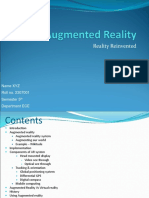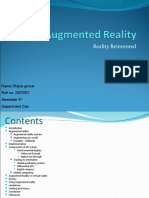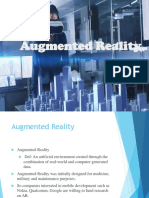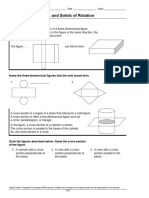0% found this document useful (0 votes)
17 views44 pagesModule1 Extended Reality
The document provides an overview of Augmented Reality (AR), detailing its definition, historical development, key technologies, and applications across various fields. It discusses the system structure of AR, including input, processing, display, and interaction technologies, as well as challenges faced in hardware and software development. Additionally, it explores the creation of AR content, including visual, audio, and sensory experiences, and highlights mobile AR applications in gaming, retail, education, navigation, and entertainment.
Uploaded by
VishwanathanCopyright
© © All Rights Reserved
We take content rights seriously. If you suspect this is your content, claim it here.
Available Formats
Download as PPTX, PDF, TXT or read online on Scribd
0% found this document useful (0 votes)
17 views44 pagesModule1 Extended Reality
The document provides an overview of Augmented Reality (AR), detailing its definition, historical development, key technologies, and applications across various fields. It discusses the system structure of AR, including input, processing, display, and interaction technologies, as well as challenges faced in hardware and software development. Additionally, it explores the creation of AR content, including visual, audio, and sensory experiences, and highlights mobile AR applications in gaming, retail, education, navigation, and entertainment.
Uploaded by
VishwanathanCopyright
© © All Rights Reserved
We take content rights seriously. If you suspect this is your content, claim it here.
Available Formats
Download as PPTX, PDF, TXT or read online on Scribd
/ 44



